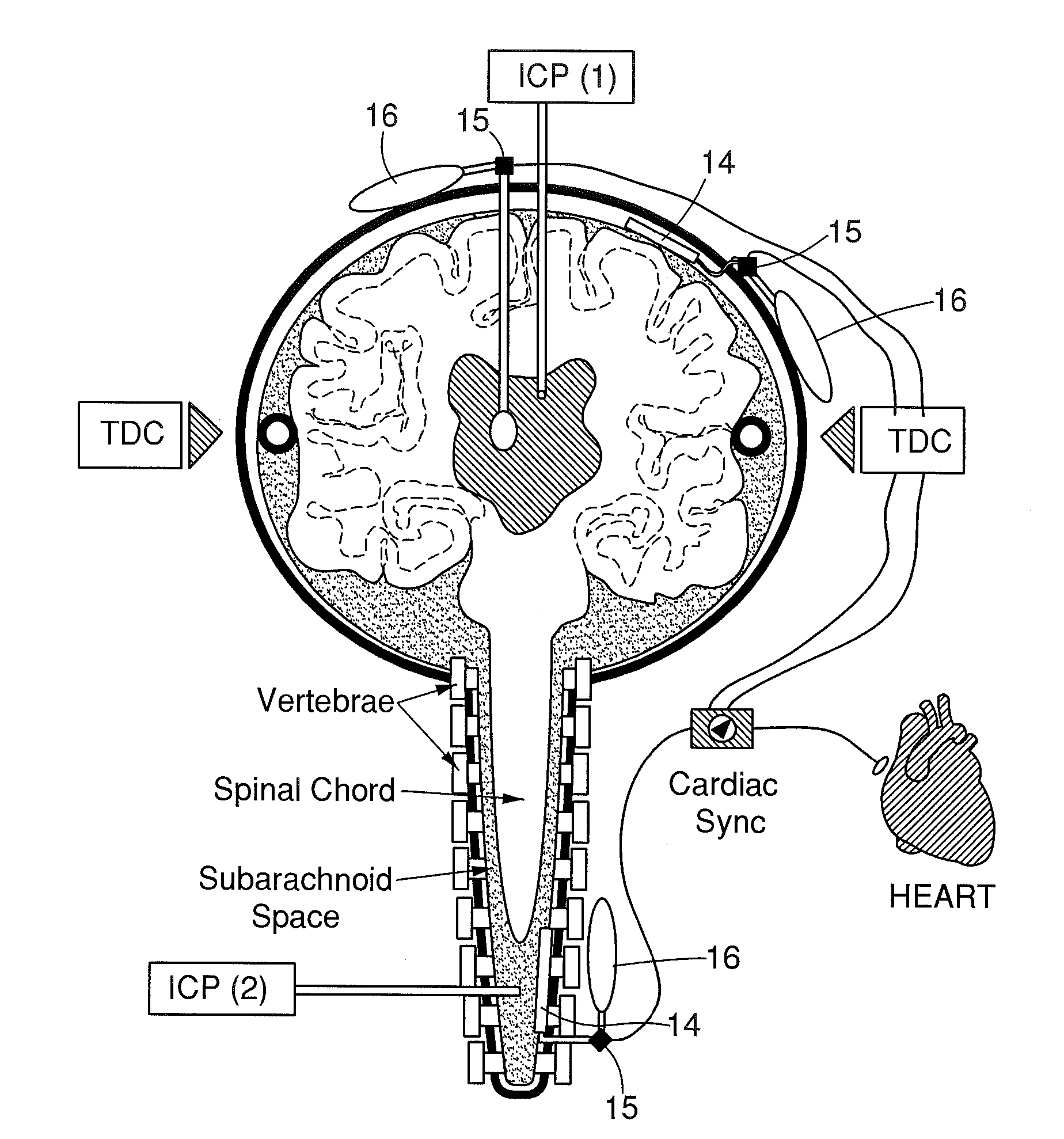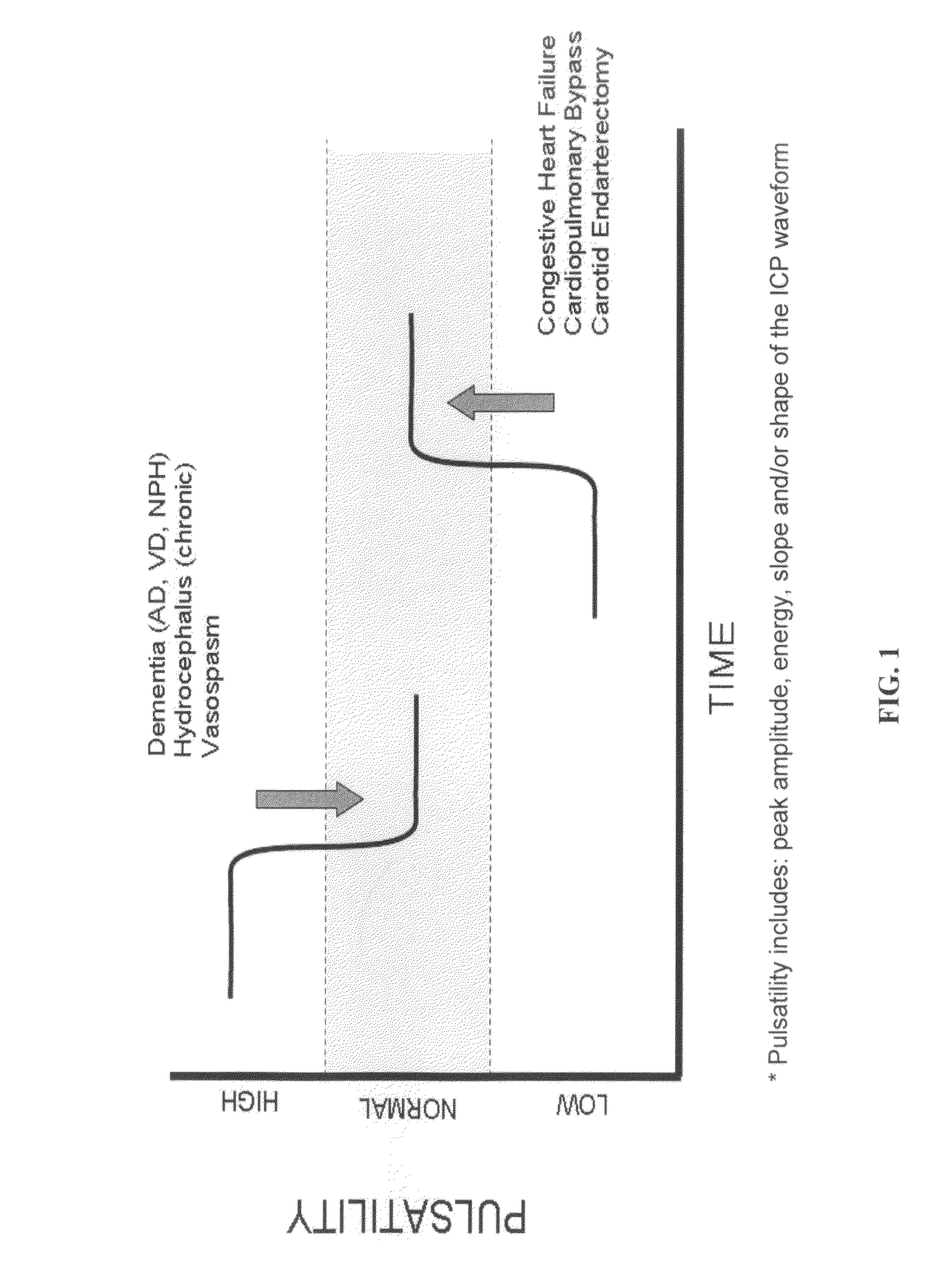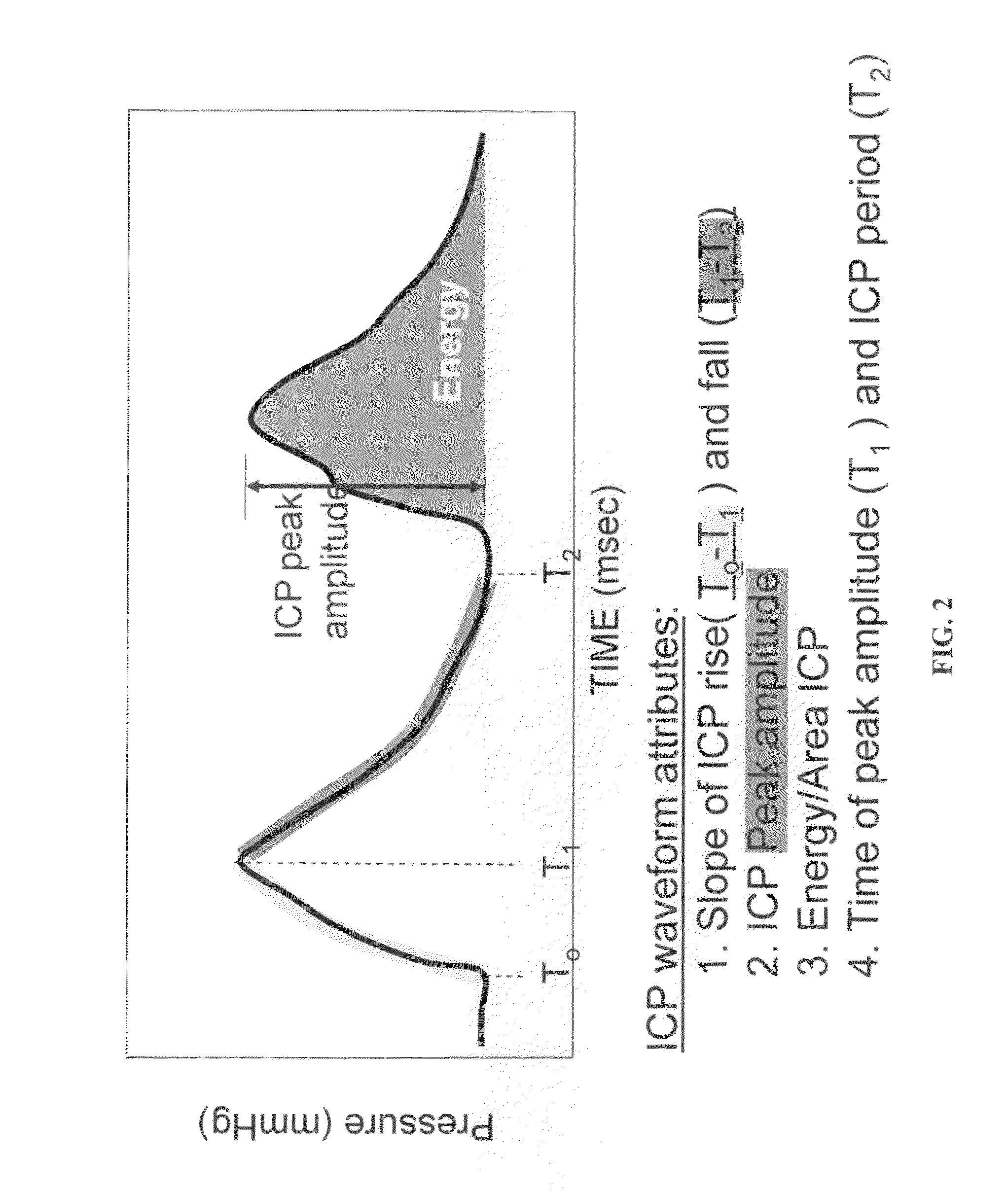Medical oscillating compliance devices and uses thereof
a technology of compliance device and medical device, which is applied in the direction of prosthesis, machine/engine, catheter, etc., can solve the problems of decreased cerebral blood flow (cbf), decreased intracranial compliance, and abnormal intracranial hydrodynamics, so as to increase the efficiency of cerebral blood flow for an individual
- Summary
- Abstract
- Description
- Claims
- Application Information
AI Technical Summary
Benefits of technology
Problems solved by technology
Method used
Image
Examples
##ic example 1
Prophetic Example 1
Experimental Testing of Oscillating Compliance Device
Balloon Design
[0093]Balloon catheters are designed and created to meet the specific design parameters (i.e., shape, volume displacement) and activation (i.e., frequency, amplitude, duration) with the cardiac cycle prior to in vivo experimental animal testing. A prototype of the balloon catheter is shown in FIGS. 10 and 11. The design parameters will vary based on placement of the balloon catheter in an epidural or CSF space of a subject's brain or spinal cord. For example, the dimensions of a balloon catheter for use in the epidural space of the individual's brain could encompass a length of about 10-50 mm, a width of about 5-20 mm and a thickness of about 4-5 mm. Those dimensions for a balloon catheter placed within the CSF space of a subject's brain could be a length of about 5-10 mm, a width of about 1-10 mm and a thickness of about 1-5 mm and those for a balloon catheter placed within the epidural space of t...
example 2
Oscillating Compliance Device Fabrication
[0104]One embodiment of a working OCD as shown in FIGS. 13A-B was fabricated by the following methods:
Method 1
[0105]1. Sizing study: A PVC balloon was made based on the size and volume estimation (predetermined) using a PVC film by heat sealing. Ten centimeter PVC pressure tubing (Becton Dickinson PT06) was bonded with the female end, as a port by using polyurethane adhesive.
2. SLA (stereolithography) mandrel design and build: The internal dimension of a circular or spherical balloon was built based on satisfaction of the sizing study design. The disk shape design needed to fit the requested volume, dimension and properties for solution casting. A solid model was created with Pro / Engineer and the disk built with SLA using a UV cured resin.
3. Silicone rubber / Plaster mold making: The UV cured resin disk was polished and one half of the disk was cast with silicone rubber (P50, Silicone Inc.) while the other half was cast with plaster.
4. Clay man...
example 3
Animal Model of Chronic Hydrocephalus (CH)
[0111]An experimental animal model of chronic obstructive hydrocephalus produced a gradual increase in ventricle size, which was well tolerated, producing transient and subtle clinical effects. Unlike previous models, there was no focal compression or general inflammation, which may confound analysis. Because of the animal size, this model allows clinically relevant measurements of CBF, CSF hydrodynamics (i.e., volume and pressure), intracranial compliance, and their relationship to CSF and brain pathology.
[0112]Chronic obstructive hydrocephalus was induced in adult mongrel canines by surgically obstructing the posterior cerebral aqueduct and fourth ventricle through the insertion of a catheter and injection of cyanoacrylate gel (0.4-0.6 cc) (see FIG. 20). A small occipital craniectomy allows the posterior fossa to be exposed, allowing visualization of the cerebellar vermis, dorsal brainstem, and spinal cord, and the arachnoid membrane overl...
PUM
 Login to View More
Login to View More Abstract
Description
Claims
Application Information
 Login to View More
Login to View More - R&D
- Intellectual Property
- Life Sciences
- Materials
- Tech Scout
- Unparalleled Data Quality
- Higher Quality Content
- 60% Fewer Hallucinations
Browse by: Latest US Patents, China's latest patents, Technical Efficacy Thesaurus, Application Domain, Technology Topic, Popular Technical Reports.
© 2025 PatSnap. All rights reserved.Legal|Privacy policy|Modern Slavery Act Transparency Statement|Sitemap|About US| Contact US: help@patsnap.com



